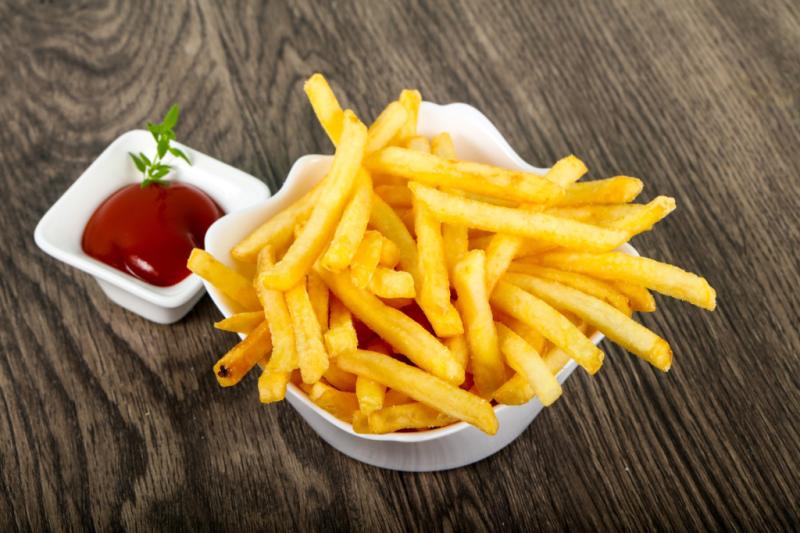Origins
While they are considered one of the most popular side dishes around the world today, their exact origins are unknown. Some historians suggest that French fries originated in France in the late 16th century but were not widely popular until the late 19th century when street vendors in Belgium began selling frites. However, Belgian culinary historians dispute this and argue that French fries were first served in Francophone Wallonia in the early 17th century. Regardless of which country lays true claim, by the late 1880s were hugely popular in both France and Belgium. It was during the turn of the 20th century when French immigrants brought their fried potato recipes to America that fries began their path to international stardom.
Global Popularity Takes Off
As fries spread around the world in the 1900s thanks to colonization and increased globalization, their popularity exploded in the mid-20th century following WWII. Burger joints and fast food chains in America that pioneered the drive-thru model began adding fries to their menus in the 1950s as the perfect complement to hamburgers. By the 1970s French Fries had fully cemented their status as the world's favorite side dish and were being enjoyed on every populated continent. Mcdonald's and other major fast food chains played a huge role in popularizing fries globally through franchising and adapting recipes to local tastes. Today countries like Belgium, France, USA and Canada consume more fries than anywhere else, with the average American eating over 30 pounds of fries per year.
Preparation and Common Varieties
There are a few standard methods used to prepare french fries globally but the main principle is to first peel and cut raw potatoes into thin strips before deep frying them in hot oil. Classic varieties include shoestring, regular cut and thick-cut steak fries depending on a diner's preferences. More indulgent recipes call for deep frying the potato strips twice to achieve that crispy exterior and fluffy interior texture associated with the best fries. Seasonings also vary widely from plain salted to garlic parmesan and even sweet potato fries have grown popular as a healthier alternative. In many regions unique preparations have taken root like poutine gravy-topped fries in Canada and loaded baked potato fries in America.
Health Considerations and Trends
As one of the unhealthiest yet most loved side dishes, they have faced increasing criticism for their high fat and calorie content from nutrition advocates. A single small serving can contain over 10 grams of fat and 150 calories. When topped with sauces, the calorie and sodium counts multiply substantially. For this reason, many restaurants now offer baked or oven-fried options along with traditional deep fried varieties. There has also been a major surge in interest for alternative potato preparations like roasted potato wedges or homestyle skillet fried potatoes seen as healthier swaps. Even major chains like McDonald's have responded by testing new seasons and topping flavors as well as limiting super-sizing options. Meanwhile, innovation continues with gourmet twists like truffle fries and loaded fries infused with novel ingredients keeping fries relevant for foodies and casual diners alike.
International Regional Variations
While the basic blueprint of peeled potato strips deep fried in oil remains consistent, regional variations have emerged around the world that put unique cultural spins on french fries. In Japan, furaidopoteto or potato sticks are paper thin and extra crispy, almost chip-like in texture. Indonesian and Malaysian rendangs serve thicker baton fries along with kebabs and curries. Belgians favour double fried fries that are fluffy inside and sweet potato fries called frietjes. Indians enjoy aloo fries or spiced potato wedges as street snacks. In Latin America tajadas or chips replace fries on many menus. Meanwhile in Quebec, poutine has become as iconic as the fries it features, laden with squeaky cheese curds and dark beef gravy. These localized innovations exemplify how universally adopted french fries have become embedded in global food cultures.
The Future of Fry Innovation
As consumer demand for convenient snacks and appetite for global flavours rises unabated, they show no signs of falling from favour any time soon. Major fast food and snack producers continue pumping resources into new product development to keep fry lovers engaged. Interest grows for exotic spicing blends, vegan fry coatings, flavoured salts and novel dipping sauces. Small artisanal brands pop up churning gourmet fry varieties at premium price points. Technology and food science may facilitate lower calorie preparation methods like air or infrared frying. Urban centers worldwide see booming late night fry truck and cart economies serving indulgent loaded fry dishes till dawn. Meanwhile health conscious eaters steadily shift towards baked, spiralized or veggie fry varieties. In a crowded snacks market, constant reinvention will dictate fries remaining relevant. With culinary tradition and global appetite firmly behind them, french fries seem poised to keep sizzling well into the future.
For Deeper Insights, Find the Report in the Language that You want:
About Author:
Money Singh is a seasoned content writer with over four years of experience in the market research sector. Her expertise spans various industries, including food and beverages, biotechnology, chemical and materials, defense and aerospace, consumer goods, etc. (https://www.linkedin.com/in/money-singh-590844163)
